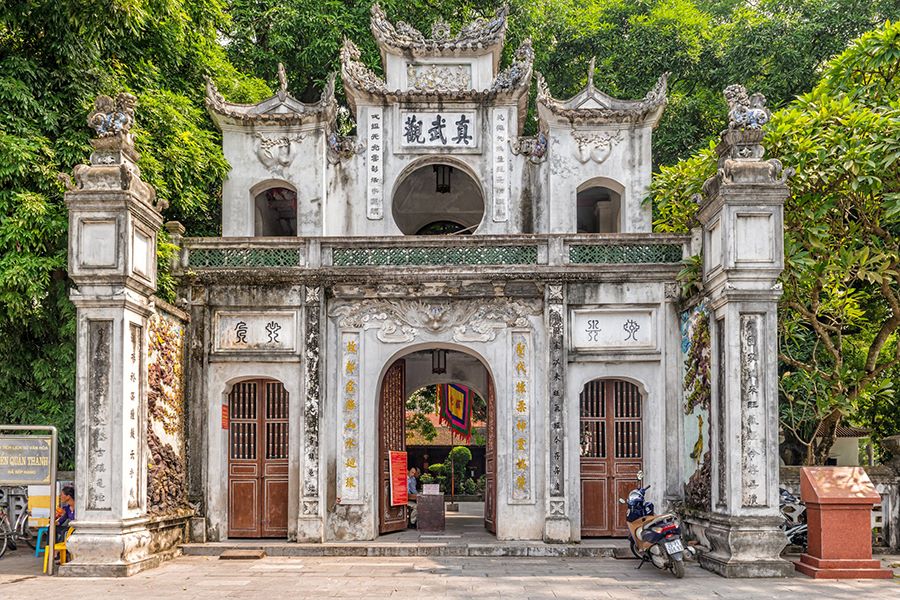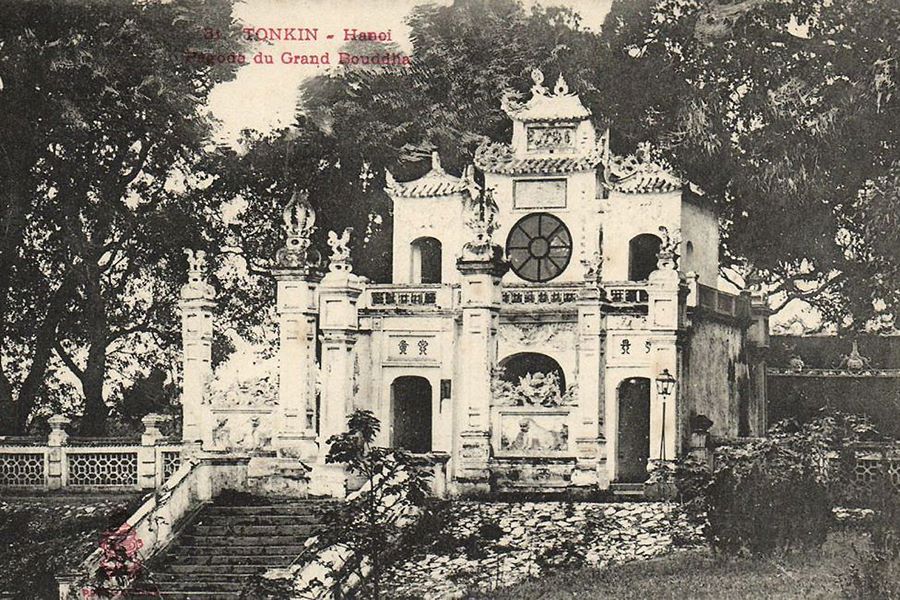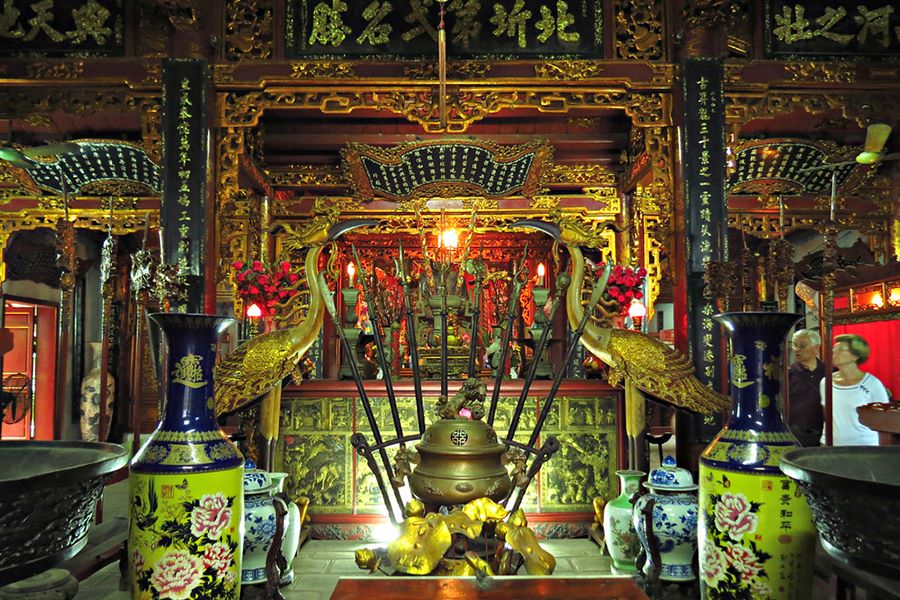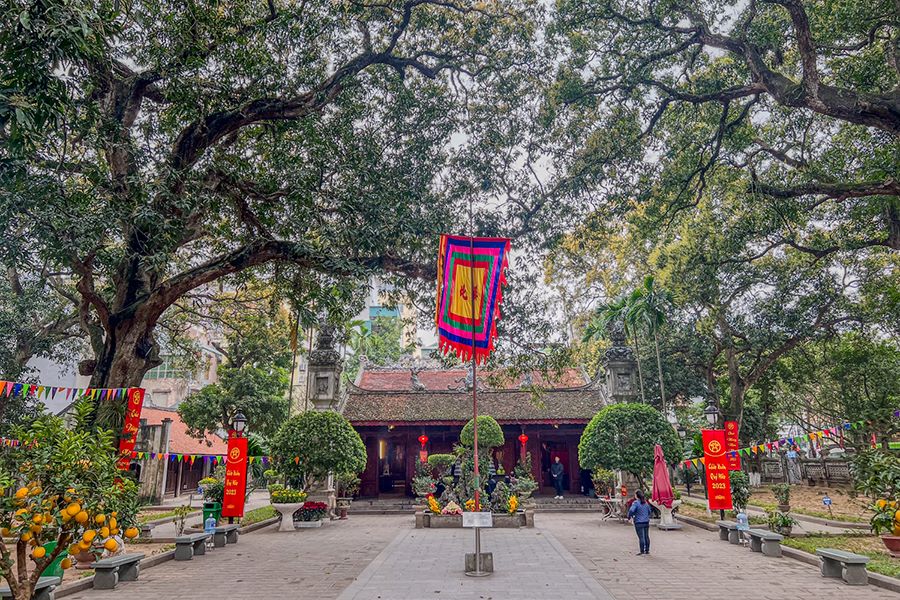One of the four hallowed temples that watch over Hanoi's four corners is Quan Thanh Temple. This place has many historically significant items that have been conserved. Quan Thanh Temple is one of the well-known temples in Indochina tours that demonstrates a strong sense of historical and cultural identity. This historic temple, which is situated in Hanoi's north, is a must-see sight for visitors, especially following the Tet festival in the spring.
Quan Thanh Temple Location - Opening Hours – Entrance Fee – Dress Code
Location: 190 Quan Thanh Street, Ba Dinh District, Hanoi
Quan Thanh Temple Opening Hours
Daily hours: 8:00 AM to 5:00 PM
All day on Lunar New Year's Eve
Lunar days 1 and 15: 6:00 AM to 8:00 PM
Quan Thanh Temple Entry Fee
Adult tickets cost 10,000 VND each.
Children and students: each ticket is worth 5,000 VND.
Quan Thanh Temple Dress Code
Modest clothes that cover the shoulders and legs
With a view of West Lake, Quan Thanh Temple is situated at the intersection of Thanh Nien Street. This ancient temple, together with the Tran Quoc Pagoda, the Van Nien Pagoda, the Phu Tay Ho Temple, and numerous other temples in the area, has made a substantial contribution to the harmonious architectural complex that exemplifies priceless cultural treasures.
Quan Thanh Temple History
Dedicated to Huyen Thien Tran Vu, a hybrid god of Chinese mythology Chan Vo Tinh Quan and Vietnamese mythology An Duong Vuong, Quan Thanh Temple was constructed in 1010 during the Early Ly Dynasty. The temple honors both Buddhism and Taoism. Between 1618 and 1941, there were seven renovations to it. This temple in Hanoi was initially designated as a national historical and cultural treasure in 1962.
Quan Thanh Temple Architecture
Early on, Buddhism had a big influence on the temple's design. Even after numerous renovations, the Nguyen Dynasty's architectural style can still be seen in many of its modern constructions.
As you enter through the gate, four pillars bearing four Vietnamese phoenixes will be seen. Every pillar features a Vietnamese unicorn atop it. Pairs of red couplets encircling the four pillars lend further grandeur to the temple gate.
The black bronze statue of Huyen Thien Tran Vu, which stands 3.96 meters tall and weighs 4 tons, is the focal point of the main hall. The statue, with its intricate carvings, is regarded as an example of the 17th-century artists' skillful bronze casting technique.
Quan Thanh Temple is renowned not just for its bronze casting but also for its exquisite wood carvings. Numerous carvings of celestial and earthly activities, pine, bamboo, chrysanthemum, apricot, and sacred creatures from Vietnamese mythology can be found on the temple's wooden sections.
Best Time to Visit Quan Thanh Temple, Hanoi
All year long, Quan Thanh Temple is open to visitors. Locals visit the temple to present incense on the first day of each lunar month. Students in high school can also learn about culture and history by visiting this site. In particular, the residents swarm Quan Thanh Temple on Lunar New Year's Eve every year in the chilly weather, anxious to worship and ask for blessings.
How to Get to Quan Thanh Temple
The quickest path to the temple is via the streets of Lang, Lang Ha, Hoang Cau, and Ton Duc Thang. Quan Thanh Temple can be reached in a matter of minutes from Ton Duc Thang Street.
If you choose to travel by bus, you can use the No. 50, 45, and 22A lines, which all pass by Quan Thanh Street. It just takes five or ten minutes to walk to Quan Thanh Temple from the bus station on Quan Thanh Street.
A treasure of immense cultural, artistic, architectural, and sculptural importance is Quan Thanh Temple. The historic and lyrical beauty of West Lake, Hanoi, is enhanced by the stunning surroundings of the temple and the melodious ring of Tran Vu bells.





